Date and place
- May 20th and 21st, 1813 on the banks of on the Spree river, around Bautzen (now in Saxony, Germany, near the Czech border).
Involved forces
- French army, with additional troops from Württemberg, Baden, Hessen, Saxony and the Kingdom of Italy (150,000 men in all, of whom 80,000 will be engaged), under the command of Emperor Napoleon I.
- Russian-Prussian army (90 to 100,000 men), under Marshal Ludwig Adolf Peter zu Sayn-Wittgenstein-Ludwigsburg.
Casualties and losses
- French army: 12 to 15,000 soldier out of combat, 800 prisoners.
- Russian-Prussian army: 18,000 killed, wounded or missing.
Aerial panorama of the battlefield of Bautzen
The general situation
The campaign in Saxony got off to a favorable start for the French at the battle of Lützen (German: Schlacht von Großgörschen) on May 2, 1813. Unfortunately, the victory could not be properly exploited due to a lack of cavalry, but the coalition forces were forced to retreat to the Spree, and Napoleon entered Dresden
The allies, for their part, were determined to risk a general battle, despite their numerical inferiority and a position that was not the best. Their reasons were more psychological and political than military: a prolonged retreat would have disastrous effects on the morale of their troops, and would worry Austria, which they hoped to win over to their cause. The Russians and Prussians therefore regrouped their forces and set up camp at Bautzen, not far from Austria and in a good position to receive Russian reinforcements if necessary.
Realizing that his opponents were determined to fight where they were entrenched, Napoleon advanced on Bautzen with the corps he had not entrusted to Ney.
May 20, 1813: first day of the battle
Allied positions
The Allies have arranged themselves in two lines.
The first one held the heights on the right (east) bank of the Spree River
- Guillaume Emmanuel Guignard de Saint-Priest
Guillaume Emmanuel Guignard de Saint-Priest : from Preuschwitz [51.15623, 14.40677] to Bautzen - Duke Eugen of Württemberg (Евгений Вюртембергский)
Eugen von Württemberg : from Bautzen to Ochna [Oehna] [51.19935, 14.44352] - Friedrich Kleist von Nollendorf
Friedrich Kleist von Nollendorf : at Burk [51.19997, 14.46116], holding the passages to Malschwitz [51.23763, 14.52088], Nimschütz and Nieder-Gurig - Yefim Ignatyevich Chaplits (Ефим Игнатьевич Чаплиц)
Yefim Ignatyevich Chaplits : at Klix and Salga - Sergei Nicolayevich Landskoy (Сергей Николаевич Ланской)
Sergei Nicolayevich Landskoy : near Leichnam.
The second line, also the main, was based on the plateaus to the east, from Gleina
- the extreme right was held by Prince Michael Barclay de Tolly (Михаи́л Богда́нович Баркла́й-де-То́лли) with 9,000 hommes
- the right by Gebhard Leberecht von Blücher
- the center by Ludwig Yorck von Wartenburg with 28,000 men in all
- left wing under General Andrei Ivanovich Gorchakov (Андрей Иванович Горчавов)
Andrei Ivanovich Gorchakov with 12,000 troops - a reserve of 18,000 men, made up of the Russian Guard, held behind the village of Baschütz.
The King of Prussia's headquarters were in Kumschütz [51.18124, 14.53848], while that of Emperor Alexander I (Александр I Павлович Романов) was in Wurschen, at Wasserschloss castle:
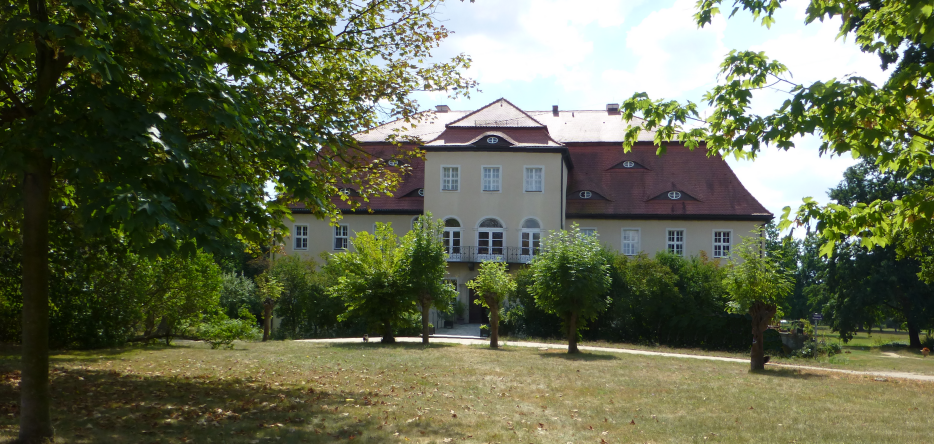
This position, although fortified along most of its length, was more fragile than it appeared. Indeed, while the left wing touched the first slopes of the Lusatian mountains [Lausitz], the right wing took shelter behind the Spree and its right-bank tributaries, which, being fordable and marshy, were not very troublesome obstacles for the opposing infantry.
What's more, by crossing the river, the enemy infantry would be protected from any defensive action by Allied cavalry by the very nature of the hilly, wooded terrain. The right flank was therefore relatively easy to overrun, despite the ponds that covered it.
Wittgenstein's plan
In Peter Wittgenstein's mind, the sole function of the first line was to force the French to reveal their attack positions. It was to withdraw as soon as this goal was achieved. Then, if the French attacked in the center, the two wings would fall back on their flanks; if, on the contrary, they attacked one of these wings, the other would also flank them.
The planned lines of retreat passed through Weissenberg for the right wing and Löbau for the left, with the army finally gathering at Reichenbach.
French positions
The French, for their part, occupied the following positions, from right to left (south to north):
- Nicolas Oudinot and the XII Corps were on the Techritz heights;
- Étienne Macdonald and the XI Corps were near Breska [Birkau or Brěza], behind the Windmuhlenberg;
- Auguste Viesse de Marmont and the VI Corps were ahead of Salz Forstgen [Salzenforst] ;
- Henri-Gatien Bertrand
Henri-Gatien Bertrand and the IV Corps support Marmont's left at Welka [Kleinwelka] and on the road to Hoyerswerda; - The guard and cavalry were on the Dresden road, behind Goedau [Göda] ;
- Headquarters were at Salzenforst. On the eve of the battle, Napoleon went to the Salzenforster Chorberg [51.19324, 14.37649, altitude 266 m] to draw up his battle plan.
- The left wing, for its part, had not yet reached the battle site: the V Corps (Jacques Alexandre Law de Lauriston) remained at Weissig [Eichberg], the III (Ney) at Maukendorf, the VII (Jean-Louis-Ebénézer Reynier
Jean-Louis-Ebénézer Reynier ) in front of Hoyerswerda, and the II (Victor), which had advanced from Wittenberg towards Dahme and Golßen, was there in contact with the Prussians and Russians.
Theoretically, this represented 150,000 men facing 100,000 coalition troops. The Emperor's plan was to turn the Allies on their right, cutting off their line of retreat and forcing them to take refuge in the mountains to the south.
The fighting
On May 20, Napoleon gave the signal for the attack. The marshals began the planned maneuver. Oudinot was ordered to cross the river Spree from the right (south) at Singwitz, and Macdonald from the center at Bautzen, in order to divert the enemy's attention to his left wing. Marmont was to cross half a league downstream of the town, and Bertrand at Nimschütz and Nieder-Gurig.
The VI Corps was tasked with plugging the gap left by the IV Corps by supporting Ney on the left (north). Ney's mission was to attack Klix with the III, V and VII Corps, to bypass the enemy's right wing and to head for Wurschen. The Guard and reserves were posted behind Macdonald's XI Corps.
Macdonald seized the stone bridge
After five hours of stubborn fighting, the VI Corps occupied Seydau, the XI Corps had taken the heights of Priswitz [Preuschwitz], and the XIIth Corps those of Ebendorf [Ebendörfel] and Postewitz [Grosspostwitz].
Marmont then had Jean Dominique Compans
Meanwhile, the XII Corps advanced to the Kunitz heights, supported by the XI Corps on the Klein Jenkowitz heights.
When Kleist and Miloradowich reached their entrenchments, Marmont took up position opposite them and on the undulating ground above, having captured the village of Nieder-Kayna, thus clearing the way for Bertrand. The latter's IV Corps then crossed the Spree and came up against Hans Ernst Karl von Ziethen
Provisional balance
At seven o'clock in the evening, the first day of the battle was over. At eight o'clock, Napoleon entered Bautzen. He had achieved only part of his objectives: several of his corps had crossed the river Spree, but his line of battle was still cut by those of Blücher, who still occupied Krekwitz [Kreckwitz]
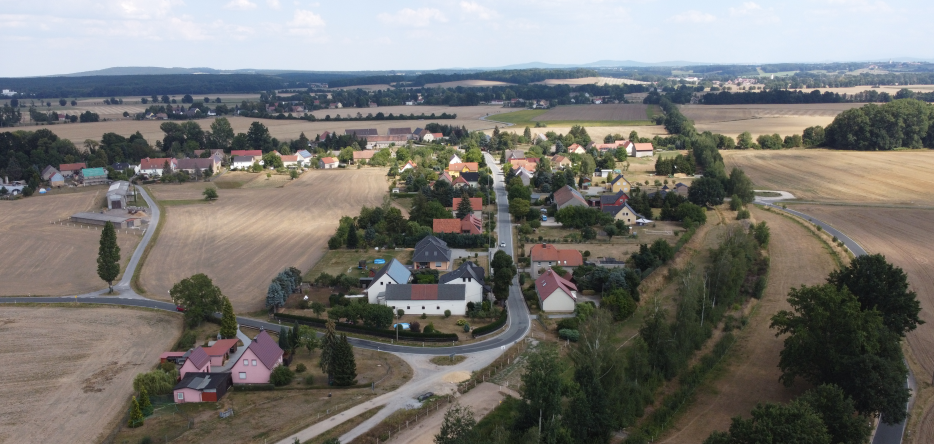
Moreover, although Ney has joined, he has not been able to bring all his forces with him and has not yet crossed the river, so the overflow of the coalition forces has not yet begun. Finally, the Allies were entrenched in a position they considered impregnable and which could still bring them victory. For them, this first day was merely a prelude to the general battle of the following day.
May 21, 1813: second day of the battle
New dispositions
On the 21st, the Allies made a few changes to their dispositions:
- Miloradowich took command of the left wing, reinforced by the troops of the Prince of Württemberg, and positioned himself on the heights overlooking the left of the entrenchments. These were occupied by Prince Gortchakov, between Baschütz and Hochkirch
Hochkirch - On his right were Kleist and Yorck, both under the command of Bluecher, who commanded the center around Litten and Krekwitz
- The right, under Barclay de Tolly, still controlled Gleina, Klix and Malschwitz
Malschwitz - Headquarters were moved to Klein Purschwitz, with reserves between Purschwitz and Kumschütz.
The fighting
The Allied command, which assumed that Napoleon would try to turn him to the south, was reinforced in this idea by the first French movements of the day.
The Emperor, who had taken up position on the heights of Nieder-Kayna, from where he could see most of the battlefield
Oudinot advanced towards Weissig and Rachlau, but met stiff resistance. Miloradowich, who believed that the French army's main effort would be against him, even took the offensive.
Oudinot then withdrew to his starting point, where he received the support of the XI Corps and supported the battle, with enough determination to convince the enemy that this was the focal point of the battle.
While the enemy's attention was thus drawn to the other end of the front, Ney, with the IIIrd and Vth Corps, took Klix, crossed the Spree and attacked Barclay, whose center was pushed in.
The Russian general retreated and reformed between Gleina and the Malschwitz pond
Around 10 a.m., Barclay had to withdraw again, towards Baruth
Ney's two Corps pursued him and soon captured the village of Preititz
Around one o'clock in the afternoon, Blücher sent Kleist to recapture Preititz, whose final loss would force him to abandon his position. The Prussians recaptured the village, but were unable to make any further progress. Ney took advantage of the situation to install his artillery on the Malschwitz heights and bombard the Krekwitz
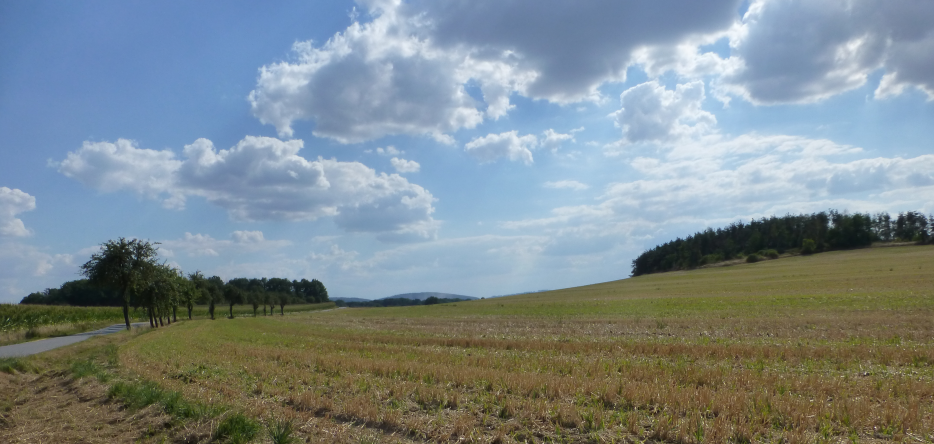
Meanwhile, Napoleon launched the VI Corps against the enemy entrenchments along the road to Görlitz and Baschütz, in order to prevent the Allied left wing from coming to the rescue of the struggling right wing.
A little later, he instructed the IV Corps, under the command of Marshal Jean-de-Dieu Soult, to attack Blücher head-on. The French knocked out the Ziethen division at Pliskowitz and Doberschütz, then set up their artillery and began shelling the enemy's in front of Krekwitz.
Once the Allied guns had been silenced, the infantry, formed in column and supported by Württemberger cavalry, attacked the village, which was captured despite the reinforcements recalled from Preititz by Blücher.
Blücher retreated to Purschwitz, followed by the French IV Corps, and called in Yorck, who broke through Litten and recaptured Krekwitz.
But in so doing, the Allies had thrown their last troops into the battle. Napoleon immediately called in his reserves. The Guard and Victor de Faÿ de Latour-Maubourg
By four o'clock in the afternoon, Ney had retaken the village of Preititz. But instead of marching immediately on Wurschen, as he had been instructed, he had seven of his divisions advance on the heights between Doberschütz and Klein-Bautzen.
The gathering of so many troops, mingling on their wings with other French corps, caused confusion that gave the allies time to withdraw in good order. It was not until five o'clock that Ney set off in the direction of Wurschen, with no chance of overrunning Barclay's and Kleist's corps on their right.
By seven o'clock, the IIIrd and Vth Corps were in Wurschen, while those of Bluecher, Yorck, Kleist and Barclay withdrew to Weissenberg.
On the French right (to the south), the VI Corps, which had penetrated the coalised entrenchments, pivoted to its right to take the enemy's left in reverse, while the XI Corps attacked the latter through Gross-Jenkowitz and the XII Corps resumed the offensive. Miloradowitch then had no option but to withdraw to Löbau.
Napoleon was still short of cavalry, and was unable to pursue the enemy with the necessary efficiency, leaving him to retreat in good order.
Assessment of the two days
On the evening of the battle, the French army stretched from Hochkirch to Wurschen, with French headquarters at the Klein Purschwitz [Neupurschwitz] inn
Allied losses were around 18,000 men, plus several thousand prisoners. French losses were between 12,000 and 15,000 men.
Although they themselves had chosen the terrain and provoked the confrontation where they had prepared everything to win, the Allies were once again defeated as a result of their inability to foresee and thwart Napoleon's strategic combinations.
Unfortunately for the French, Ney's poor choices sterilized a victory that could have turned into a triumph and seen the destruction of the allied army.
Aftermath of the battle
On the evening of May 21st, with little cavalry since the start of the Campaign in Saxony (the losses of the previous year had not been compensated for), Napoleon was unable to chase the enemy with the necessary efficiency and had to let them retreat in good order.
It was not until the following day that the pursuit was organized. General Jean-Louis-Ébénézer Reynier's VIIth Corps, the Imperial Guard and Victor de Faÿ de La Tour-Maubourg's cavalry corps attacked Prince Eugen of Württemberg's corps at Reichenbach
Arriving at Markersdorf
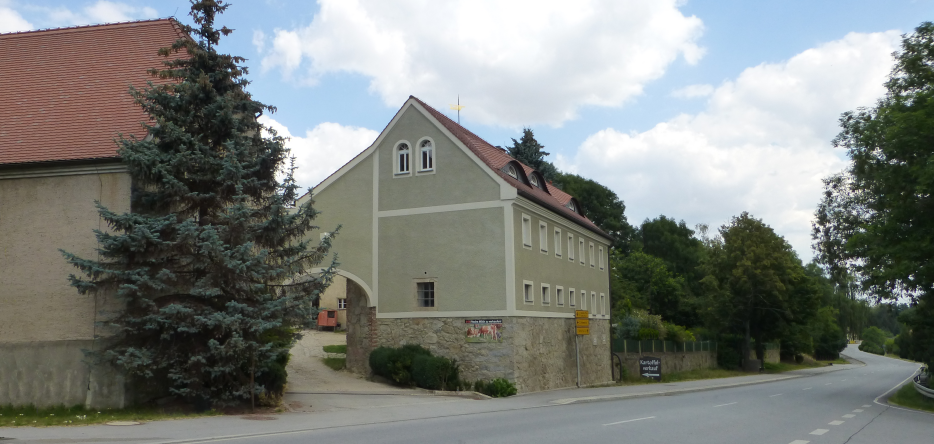
Transported to a room on the farm
General consequences
The battle of Bautzen and its aftermath had only weakened the belligerents, which was obviously more of a problem for Napoleon than for the Allies. Thus, on June 2nd, the Emperor was persuaded to conclude a seven-week armistice.
Meanwhile, on May 25, the Russian Marshal Peter Wittgenstein was relieved of his command in favor of Michael Barclay de Tolly.
Picture - "The Battle of Bautzen in 1813 - Napoleon, surrounded by his officers, receives a messenger". After Hippolyte Bellangé.
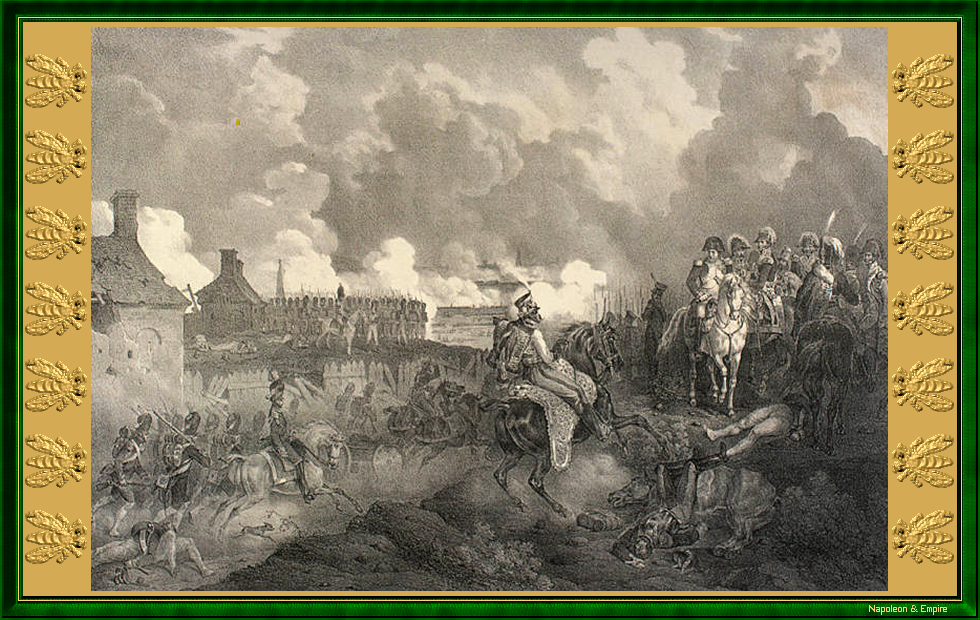
The Battle of Bautzen is also known as the "Battle of Wurschen" and sometimes the "Battle of Hochkirch" (not to be confused with the Battle of Hochkirch between Austria and Prussia in 1758).
From April 21 to 26, 1945, a battle was fought on the same ground between the troops of the Red Army (reinforced by Polish divisions) and those of the Third Reich.